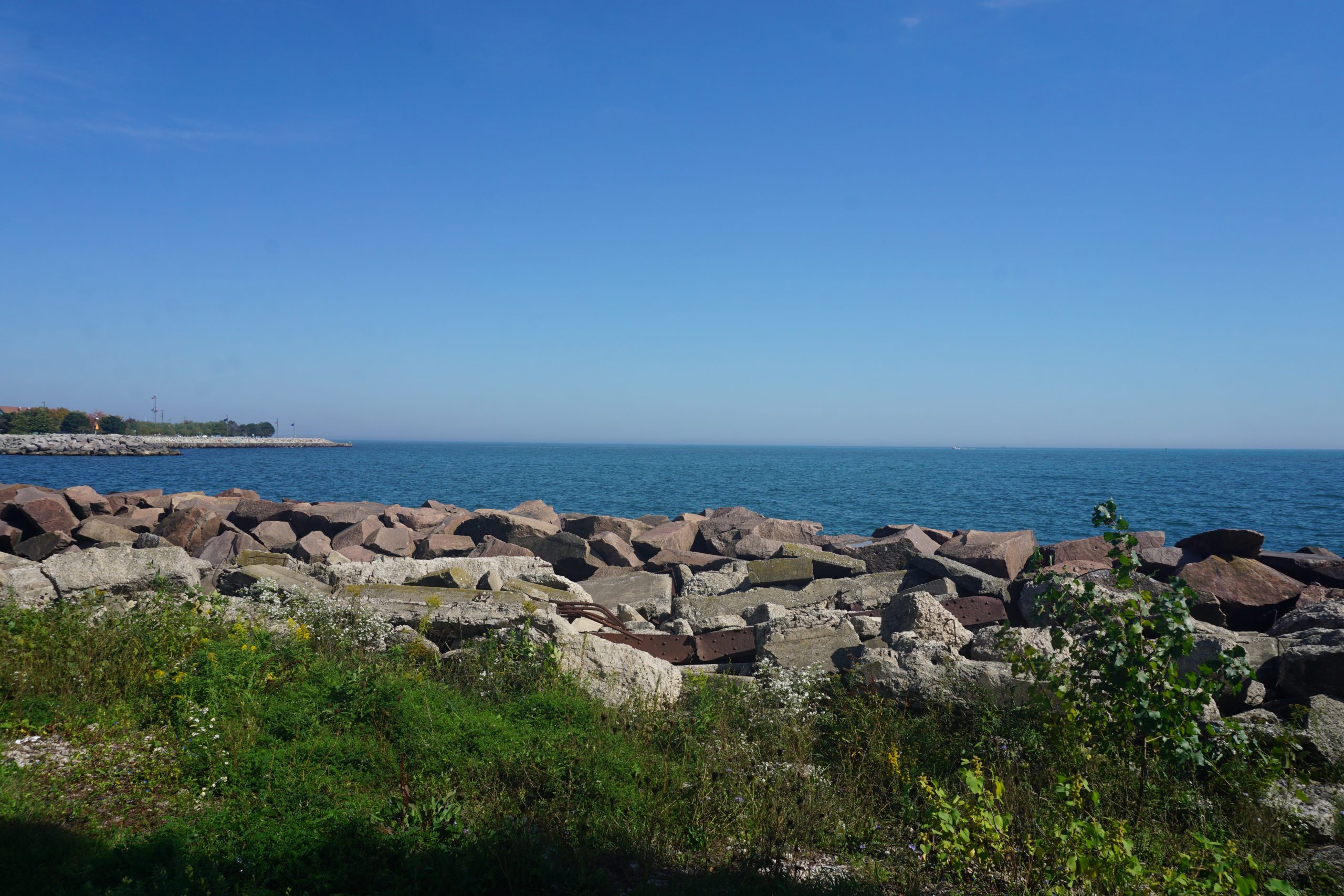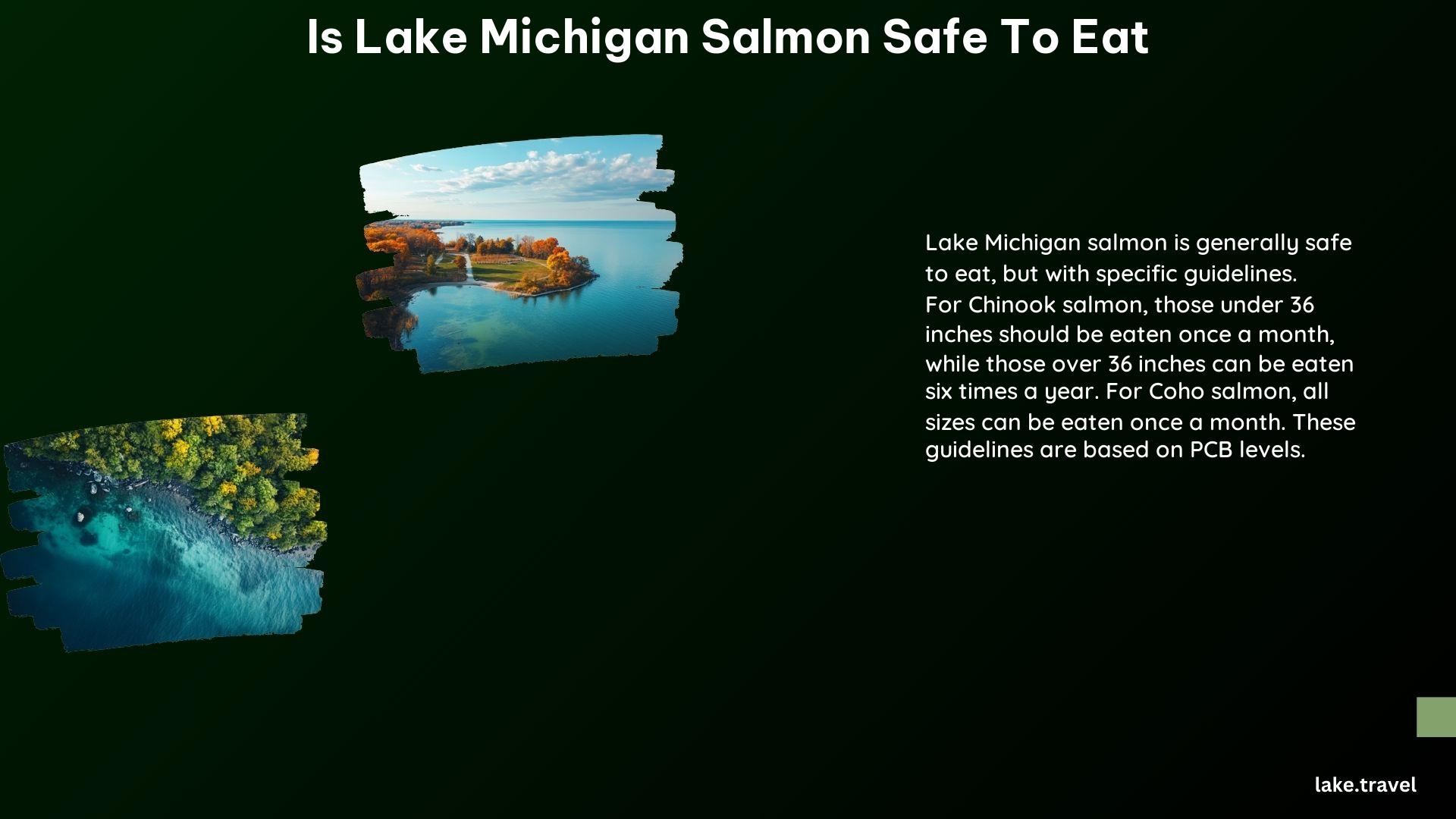Lake Michigan salmon can be a safe and healthy addition to your diet, but it’s crucial to follow specific guidelines and consumption limits due to the presence of contaminants such as polychlorinated biphenyls (PCBs) and mercury. In this blog post, we’ll explore the key considerations around the safety of consuming Lake Michigan salmon.
Contaminants in Lake Michigan Salmon

Polychlorinated Biphenyls (PCBs)
Polychlorinated biphenyls (PCBs) are a group of synthetic chemicals that were once widely used in industrial applications. These chemicals can have a significant impact on the immune system, reproductive system, and can increase the risk of cancer. Unfortunately, PCBs are present in Lake Michigan and can accumulate in the tissues of fish over time.
Mercury
Mercury is another contaminant of concern when it comes to consuming fish from Lake Michigan. Mercury poisoning can affect brain development and cause cognitive issues, particularly in vulnerable populations such as pregnant women, nursing individuals, and young children.
Consumption Guidelines

To ensure the safety of Lake Michigan salmon, it’s essential to follow specific consumption guidelines based on the size and species of the fish.
Chinook Salmon
- Less than 32 inches: 1 meal per month
- Larger than 32 inches: 6 meals per year
Coho Salmon
- All sizes: 1 meal per month
It’s important to note that these guidelines are based on the Michigan Department of Health and Human Services (MDHHS) recommendations and may vary depending on your location and local health department advisories.
Safe Handling and Preparation
To further reduce the risk of exposure to contaminants, it’s recommended to take the following steps when handling and preparing Lake Michigan salmon:
Clean Fat from Fish
Remove the fat along the back, belly fat, and dark fatty tissue, as these areas tend to have higher concentrations of PCBs.
Remove Skin
Removing the skin can help reduce the intake of mercury, as it tends to accumulate in the skin and fatty tissues of the fish.
General Recommendations
In addition to the specific guidelines for Lake Michigan salmon, there are some general recommendations to consider when incorporating fish into your diet:
Eat a Variety of Fish
Coordinate your consumption of different types of fish to avoid exceeding the total suggested limits for any one type.
Pregnant or Nursing Individuals
Be cautious about mercury intake, and consider opting for canned light tuna instead of albacore.
Children and Women of Childbearing Age
Follow the specific guidelines for ocean-caught commercial fish, as they may have different contaminant levels.
Additional Resources
If you’re unsure about the safety of consuming Lake Michigan salmon or want more detailed information, there are several resources available:
- Michigan Department of Health and Human Services (MDHHS): Provides detailed guidelines and fish advisories for various water bodies in Michigan.
- Local Health Departments: Many local health departments offer specific consumption limits and recommendations for the waters in their jurisdiction.
By following these guidelines and taking the necessary precautions, you can safely enjoy the benefits of Lake Michigan salmon as part of a healthy and balanced diet.
Reference:
– Michigan Department of Health and Human Services (MDHHS) Fish Consumption Advisories
– EPA – Polychlorinated Biphenyls (PCBs)
– CDC – Mercury Poisoning
